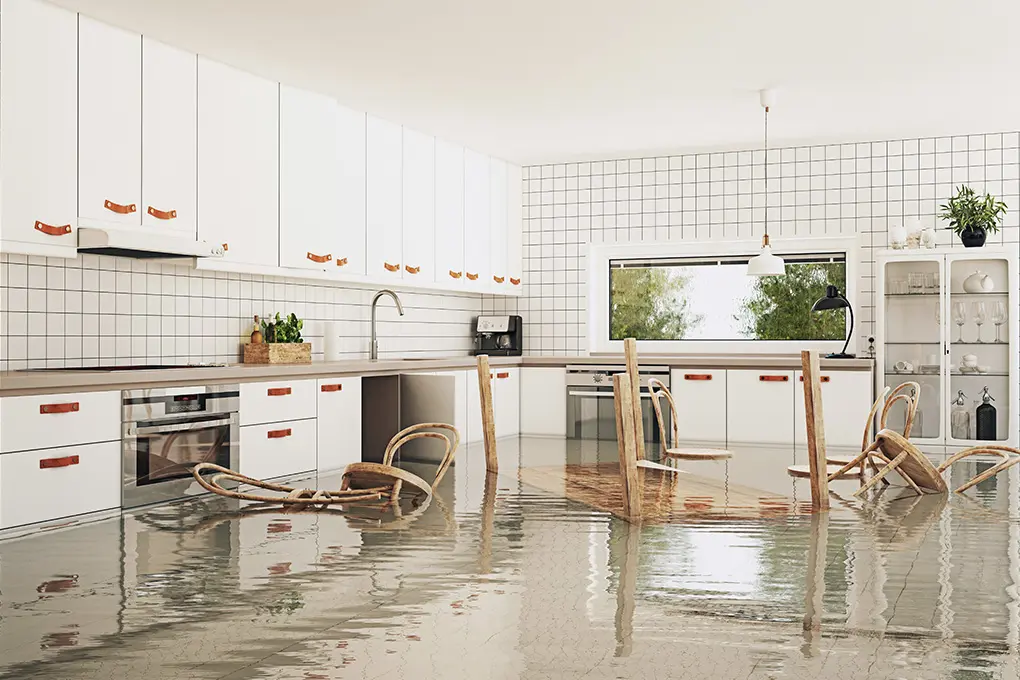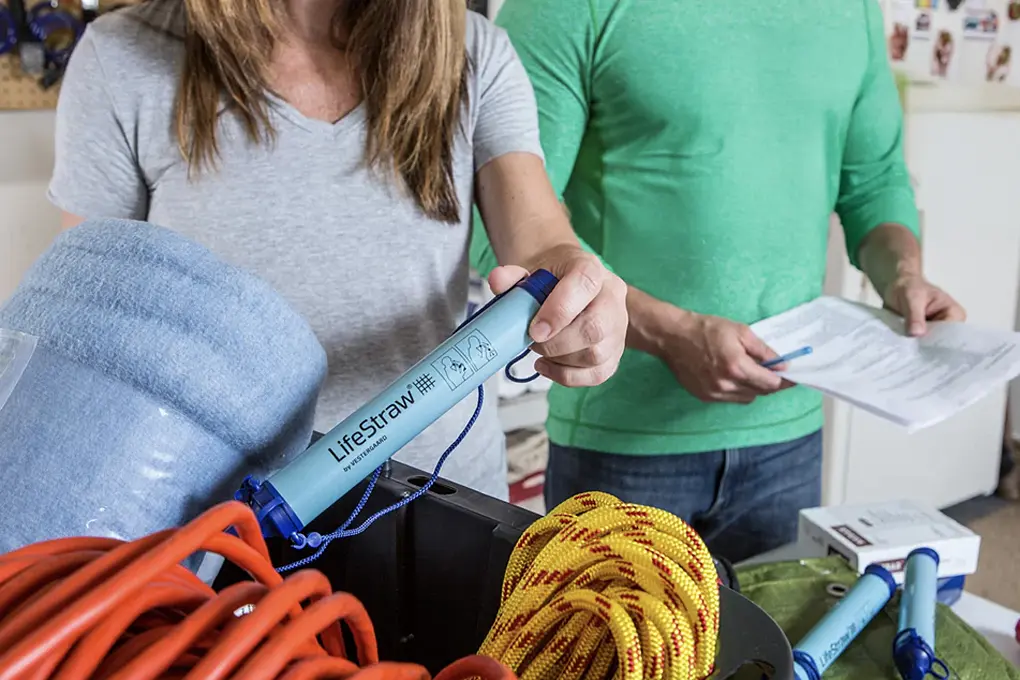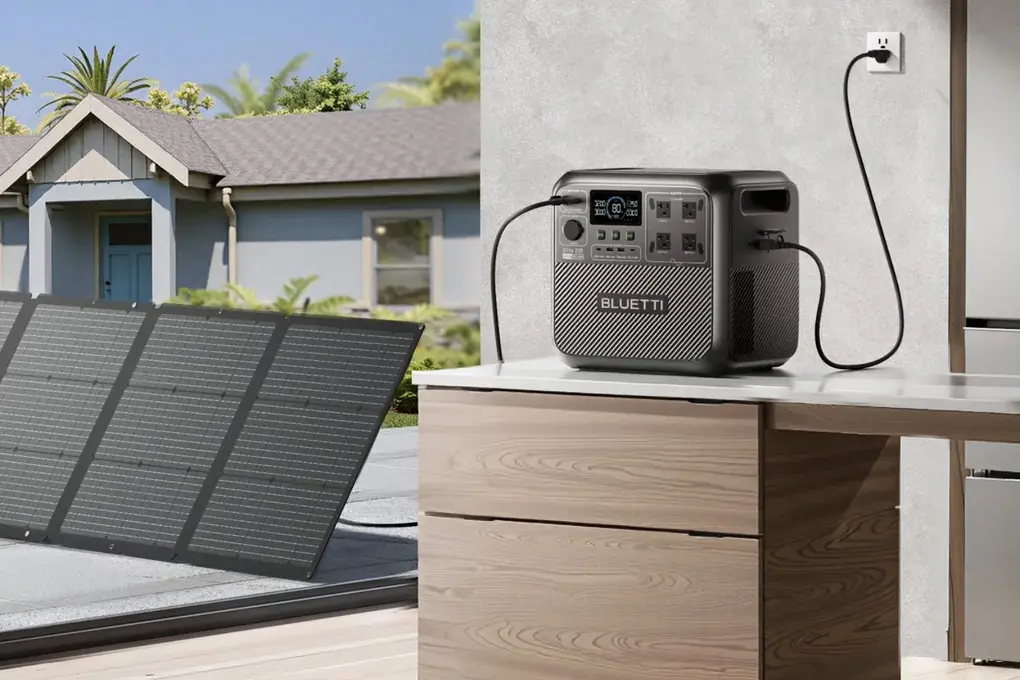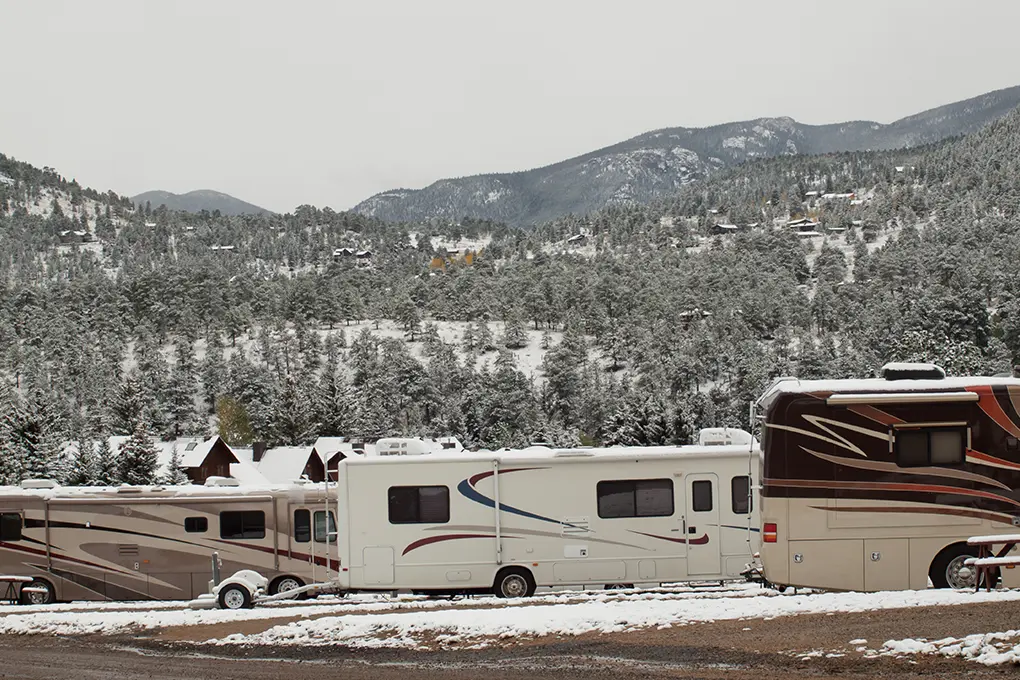Quick Answer: Flood preparedness means understanding your risk, creating a clear flood emergency plan, and protecting your home with both permanent improvements and last-minute steps. It also involves building a waterproof emergency kit, knowing how to act during a flood, and coordinating with your community to improve safety and resilience.
If you live in the United States, odds are your county has flooded. A 2025 Nature Communications study found that 99.6% of contiguous U.S. counties experienced flooding between 2000 and 2020. Costs are staggering.
The Center for Disaster Philanthropy reports 44 billion dollar flood disasters from 1980 through October 2024, averaging $4.5 billion per year, with at least 738 deaths and 166 flood deaths in 2024 alone.
The EPA also notes that extreme one day downpours have become more common, with nine of the top ten years since 1995. That is why flood preparedness matters.
This guide helps you build a clear flood emergency plan, harden your home, protect critical documents, and know exactly what to do when watches and warnings arrive. Read on to prepare before the water rises, act confidently during a flood, and recover safely when the waters recede.
Table of Contents
- Key Takeaways
- Understanding Your Flood Risk: The Foundation of Preparedness
- Creating Your Flood Emergency Plan
- Before the Flood: Essential Home Protection Measures
- Building Your Flood Emergency Kit
- During the Flood: Critical Safety Actions
- After the Flood: Safe Recovery and Restoration
- Community Preparedness and Technology Tools
- Taking Action: Your Flood Preparedness Roadmap
- Take the Next Step in Flood Preparedness
- Frequently Asked Questions
- Sources
Key Takeaways
- Flood preparedness starts with knowing your risk, as nearly every U.S. county has faced flooding and one inch of water can cause $25,000 in damage.
- A comprehensive flood emergency plan covers evacuation routes, communication, and scenario-specific actions for home, work, and night-time flooding.
- Protecting your home involves both permanent upgrades like sump pumps and last-minute steps such as flood barriers and securing utilities.
- Building a flood-ready emergency kit with seven days of waterproof supplies, protective gear, and specialized tools is essential for survival and recovery.
- Critical safety actions during flooding include immediate evacuation when ordered, avoiding basements, and never driving through floodwaters.
- Safe recovery requires structural inspections, proper protective gear, mold prevention, and thorough insurance documentation to maximize claim outcomes.
- Take the next step by visiting Batten Emergency for expert guides and resources to strengthen your flood preparedness plan today.
Understanding Your Flood Risk: The Foundation of Preparedness
Effective flood preparedness starts with knowing your true level of risk. FEMA’s official maps estimate that 13 million Americans live in 100-year flood zones, areas with a 1% annual chance of flooding. Yet research published in Environmental Research Letters suggests the real number is closer to 41 million people – more than three times FEMA’s figure.
In practice, risk extends well beyond mapped zones. The National Flood Insurance Program (NFIP) reports that one third of its claims between 2014 and 2024 came from properties outside of high-risk areas.
The financial stakes are significant. A 2025 Federal Reserve Bank of Philadelphia study found that 70% of annual flood losses remain uninsured, leaving $17.1 billion in uncovered exposure each year. Neptune Flood’s 2025 survey revealed that 77% of at-risk homes outside FEMA flood zones lack insurance altogether. For families in high-risk “A” and “V” zones, the odds are stark: at least a 25% chance of flooding during the course of a 30-year mortgage.
Local topography can raise risks even more. Homes at the bottom of hills, near creeks, or in neighborhoods with aging stormwater systems often face flooding even without being in mapped zones. Flooding is also influenced by climate change. The EPA notes that nine of the top ten years for extreme single-day precipitation in the U.S. have occurred since 1995, underscoring how flash floods and intense rain events are becoming more frequent.
To protect your household, start by checking your address on FEMA’s Flood Map Service Center. Understanding your designation and pairing it with local knowledge of drainage patterns, soil saturation, or stormwater history gives you the most accurate picture of your risk. Knowing the difference between a flood watch, a flood warning, and a flash flood warning ensures you can act quickly when alerts are issued.
Creating Your Flood Emergency Plan
A flood emergency plan is more than identifying evacuation routes. It is a comprehensive strategy that prepares households for different scenarios, family member locations, and the unpredictability of flooding events. Strong planning reduces confusion and ensures that critical steps are carried out quickly and effectively.
Evacuation Routes and Communication
Every plan should begin with two evacuation routes to higher ground. The first should be the fastest and most direct path to safety, while the second assumes the primary route is blocked. During the 2016 Louisiana floods, many residents became stranded because they relied on only one way out.
Key evacuation planning measures include:
- Mapping routes on laminated paper instead of relying solely on digital apps
- Driving both routes to note hazards and landmarks
- Identifying bridges and low-water crossings prone to flooding
- Marking emergency shelter locations
- Keeping physical maps in vehicles and go-kits
Communication planning is equally important. Families should designate an out-of-state contact who can relay updates if local networks fail. Because text messages use less bandwidth, they are often more reliable than calls during disasters. Simple group text systems allow separated members to confirm safety quickly.
Scenario-Specific Planning
Flood preparedness must account for different scenarios. Each requires unique responses:

Flooding While Everyone Is Home
This is the easiest situation for coordination. Assign roles in advance, such as who collects emergency kits, who secures vital documents, and who assists children or pets. Conduct drills quarterly to ensure responsibilities are clear. Once evacuation orders are issued, depart at the designated time and do not return for forgotten items.
Flooding During Work or School Hours
Scattered family members complicate evacuation. Review workplace evacuation procedures and confirm children’s school policies. Keep emergency supplies in vehicles and establish meeting points near workplaces or schools if returning home is unsafe. Clear pickup priorities should be agreed upon in advance.
Flooding at Night
Nighttime flooding is especially dangerous due to reduced visibility and limited response time. Install a NOAA weather radio with battery backup in bedrooms to ensure early alerts. Keep flashlights and sturdy shoes beside each bed, and use glow sticks to mark pathways for children. Practice nighttime evacuations monthly to reinforce readiness.
Documenting the Plan
All elements of the flood emergency plan should be written, laminated, and stored in a waterproof folder. Historical data from major events such as Hurricane Katrina show that households with documented plans were significantly more likely to evacuate successfully compared to those relying solely on memory under stress.
Before the Flood: Essential Home Protection Measures
Protecting your home from flood damage requires a combination of permanent upgrades and last-minute preparations. While no home can be made completely flood-proof, the right steps can reduce losses, speed up recovery, and even lower insurance premiums.
Permanent Flood-Resistance Improvements
Long-term modifications provide the strongest defense against recurring floods. These improvements often pay for themselves by preventing damage and reducing insurance costs:

- Elevating utilities above base flood elevation ($2,000-$5,000)
- Installing check valves to block sewage backups ($300-$500 per valve)
- Waterproofing basement walls with sealants ($500-$2,000)
- Adding a sump pump with battery backup ($500-$1,500)
- Improving grading or drainage to redirect water away ($1,000-$5,000)
According to The Burns Agency, elevating utilities just one foot above base flood elevation can cut flood insurance premiums by up to 30% while greatly reducing repair costs. After Hurricane Harvey, families who invested in elevating HVAC systems reported saving tens of thousands in avoided replacements.
Last-Minute Flood Preparations
When flood warnings are issued, every hour counts. A structured checklist can help ensure critical steps are completed quickly and effectively.
6-12 Hours Before Flooding
- Deploy flood barriers or sandbags at doors and low entry points
- Move vehicles to higher ground right away
- Clear gutters and storm drains of leaves and debris
- Bring outdoor furniture, grills, and decorations inside
- Fill bathtubs and containers with clean water for non-drinking use
2-6 Hours Before Flooding
- Move valuables, electronics, and documents to higher floors
- Relocate cleaning products and chemicals above likely flood levels
- Shut off electricity, gas, and water if directed by local officials
- Photograph property conditions for insurance records
- Secure propane tanks or fuel containers to prevent them from floating away
Modern flood barriers have significantly improved last-minute protection. Unlike sandbags, they deploy in minutes and can hold back two to three feet of water, which is enough to prevent most interior flooding. A single barrier typically costs between $200 and $800 per doorway but can save thousands in repair costs after a flood.
Building Your Flood Emergency Kit
A flood emergency kit should be designed with water in mind. Unlike a general disaster kit, every item must be waterproof or stored in waterproof containers. Even “water-resistant” bags can fail when submerged or exposed to hours of heavy rain.
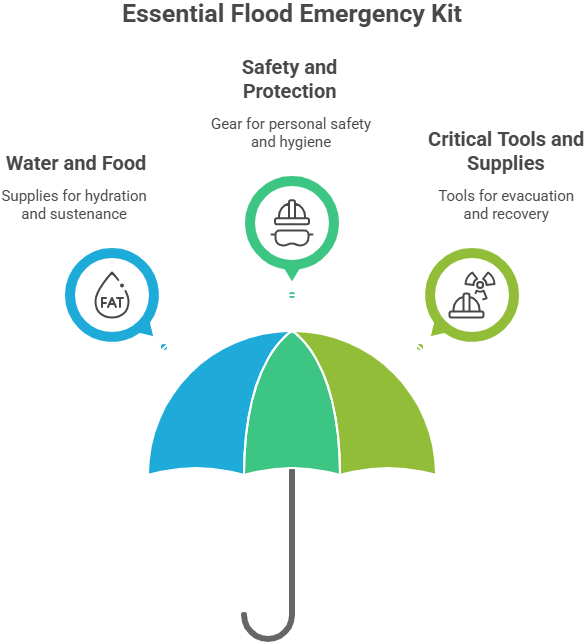
Core Flood Survival Supplies
Floods often cut off access to services longer than other disasters, so plan for at least seven days of self-sufficiency. FEMA recommends storing these essentials:
Water and Food
- One gallon of water per person per day (minimum seven-day supply)
- Shelf-stable foods that require no cooking
- Manual can opener and disposable utensils
- Water purification tablets or unscented household bleach
- Portable water filter as backup
Safety and Protection
- Rubber boots or chest waders for adults
- Waterproof heavy-duty gloves
- N95 masks for mold and contaminated debris
- Safety goggles or face shields
- Coast Guard-approved life jackets for all family members
Critical Tools and Supplies
In addition to food and water, your kit should contain tools that support evacuation and recovery.
Key items include
- Emergency whistle to signal for help
- Crowbar or axe to escape blocked exits
- Hand-crank or solar-powered radio for weather alerts
- Waterproof phone cases and a prepaid backup phone
- Portable chargers in waterproof containers
- Heavy-duty garbage bags for waste and waterproofing needs
- Duct tape and plastic sheeting for temporary repairs
- Cash in small bills ($500-$1,000 recommended)
- Rope or paracord (minimum 50 feet)
During the Flood: Critical Safety Actions
When flooding begins, conditions can shift from manageable to life-threatening in minutes. Knowing the right steps – and what to avoid – during active flooding can determine survival.
Indoor Flood Safety Rules
If floodwaters threaten your home, monitor water levels closely and follow evacuation orders immediately. FEMA notes that just six inches of fast-moving water can be dangerous, and flash floods can rise dramatically in under an hour.
Key safety guidelines include
- Never enter flooded basements due to extreme electrocution risk
- Shut off electricity at the main breaker only if you can reach it safely
- Use a pole to probe for hazards when moving through water
- Move to the highest floor but avoid sealed attics without escape routes
- Keep an axe in the attic to create an emergency roof exit if necessary
- Signal from windows or rooftops with bright fabric for rescuers
Vehicle and Walking Safety
According to the National Weather Service, over half of flash flood deaths occur in vehicles. The danger escalates quickly:
- Six inches of water causes drivers to lose control
- Twelve inches can float most cars
- Twenty-four inches can carry away trucks and SUVs
If your vehicle stalls in rising water, leave it immediately. Keep a window breaker and seatbelt cutter accessible, as electric systems often fail when submerged.
Walking through floodwaters also carries serious risk. Six inches of moving water can knock an adult off their feet. Always use a sturdy pole to check for hidden hazards, avoid downed power lines, and watch for displaced manhole covers. If traveling with others, link arms or tie together with rope to prevent separation.
After the Flood: Safe Recovery and Restoration
Floodwaters leave behind hidden dangers ranging from unstable structures to contaminated debris. Taking a cautious, systematic approach protects both health and property recovery efforts.
Initial Assessment and Documentation
Do not return until authorities confirm the area is safe. Once cleared, inspect carefully before entering.
Exterior assessment
- Check the foundation for cracks or shifting
- Look for leaning walls, damaged porches, or additions
- Smell for gas leaks – do not enter if detected
- Identify downed power lines and avoid contact
- Mark visible high-water lines on the structure
Documentation for insurance
- Photograph every room from multiple angles
- Take close-ups of damaged items with visible labels
- Record a video walkthrough with verbal descriptions
- Measure and mark water levels on walls
- Keep receipts, serial numbers, and samples of materials
FEMA notes that thorough documentation often improves claim outcomes.
Health and Safety During Cleanup
Mold can develop within 24 to 48 hours, so drying begins immediately. The CDC warns that cleaning flood-contaminated property without protection exposes you to sewage, bacteria, and mold spores.
Protective equipment should include:
- N95 or P100 respirators
- Waterproof gloves
- Safety goggles or face shields
- Steel-toed waterproof boots
- Disposable coveralls in heavily contaminated areas
Disinfect all surfaces using a mixture of one cup of household bleach per gallon of water. Never mix bleach with ammonia or other cleaners. Electrical and structural systems should always be inspected by licensed professionals before reoccupation, as damaged wiring or gas lines can spark fires weeks after a flood.
Finally, contact your insurance company as soon as possible, but review offers carefully before accepting. Register with FEMA and state disaster assistance programs, since some cover costs not included in insurance policies.
Community Preparedness and Technology Tools
Individual preparation matters, but community-wide action multiplies resilience. FEMA and the National Academies note that neighborhoods with coordinated plans consistently recover faster and sustain fewer losses during disasters.
Building Neighborhood Networks
Communities can begin building resilience by:
- Mapping neighborhood resources such as generators, boats, and medical training
- Identifying residents who may need evacuation assistance
- Creating communication trees for rapid alerts
- Pooling funds for shared flood barriers
- Practicing equipment deployment as a group
- Coordinating with local emergency management officials
Modern Flood Warning Technology
Technology provides earlier, more reliable warnings than ever before.
- Smart sensors ($30-50 each) alert mobile devices when water is detected near basements, sump pumps, or appliances.
- Advanced weather apps like Weather Underground or MyRadar offer hyperlocal forecasts.
- Satellite communicators such as Garmin inReach maintain connectivity when towers fail, a critical safeguard during hurricanes when infrastructure is destroyed across entire regions.
Building Long-Term Resilience
Preparedness does not end with immediate response. Long-term measures reduce damage, lower insurance costs, and improve recovery outcomes.
Property improvements
- Install flood-resistant flooring and drywall below four feet
- Elevate outlets and major appliances above base flood elevation
- Add exterior drainage improvements to reduce pooling
Insurance considerations
- Standard homeowner policies exclude flood damage
- NFIP policies average around $700 annually in moderate-risk zones
- There is a 30-day waiting period before coverage takes effect
- Just one inch of water causes an average of $25,000 in property damage
- Document mitigation steps, which may qualify for lower premiums
Staying Informed and Adapting
Flood risks are dynamic. Climate change has increased heavy rainfall events, while new development and aging infrastructure change drainage patterns.
NOAA and FEMA recommend reassessing flood exposure annually and engaging in community planning meetings to stay informed about upstream development and local infrastructure changes.
Prepared communities consistently show that practice and coordination transform flooding from a devastating disaster into a manageable challenge.
Taking Action: Your Flood Preparedness Roadmap
Moving from vulnerable to prepared doesn’t require perfection – it requires consistent steps. A structured roadmap helps turn preparation into progress.
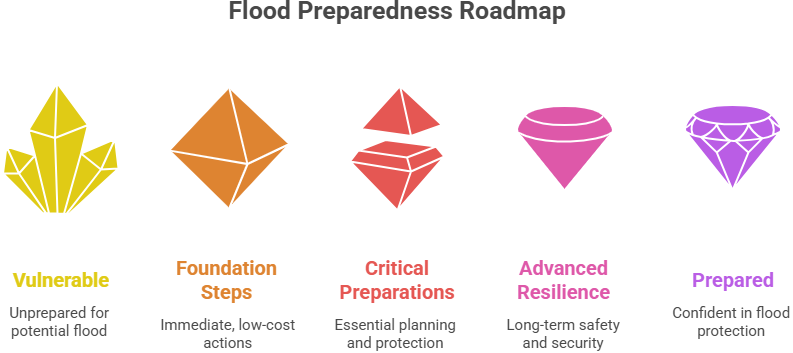
This Week – Foundation Steps
Start with immediate, low-cost actions that establish your baseline readiness:
- Check FEMA flood maps to confirm your property’s risk level
- Sign up for local emergency alerts and NOAA weather notifications
- Download weather apps that provide flood warnings
- Map two evacuation routes leading to higher ground
- Begin assembling an emergency kit with items already at home
- Clear gutters, storm drains, and yard debris to reduce water pooling
This Month – Critical Preparations
With the basics covered, expand into essential planning and protection:
- Finalize a family communication plan with an out-of-area contact
- Build a complete flood-specific emergency kit with at least 7 days of supplies
- Research, price, and select temporary flood barriers suitable for your property
- Request flood insurance quotes – NFIP policies carry a 30-day waiting period
- Connect with three neighbors to coordinate resources and support
- Practice evacuation drills with family members
This Season – Advanced Resilience
For long-term protection, invest in measures that improve both safety and financial security:
- Install permanent flood protection improvements such as sump pumps or check valves
- Purchase flood insurance if not already covered; remember that just one inch of water can cause $25,000 in damage
- Join or form a neighborhood preparedness group
- Complete a home inventory for faster insurance claims
- Schedule a professional inspection of utilities and electrical systems
- Advocate for community-level mitigation projects like drainage upgrades or retention ponds
Preparedness reduces both risk and anxiety. When protective measures are in place, flood forecasts become valuable information instead of sources of stress. The confidence of knowing you’ve acted to safeguard your family and property is the most important outcome of all.
Take the Next Step in Flood Preparedness
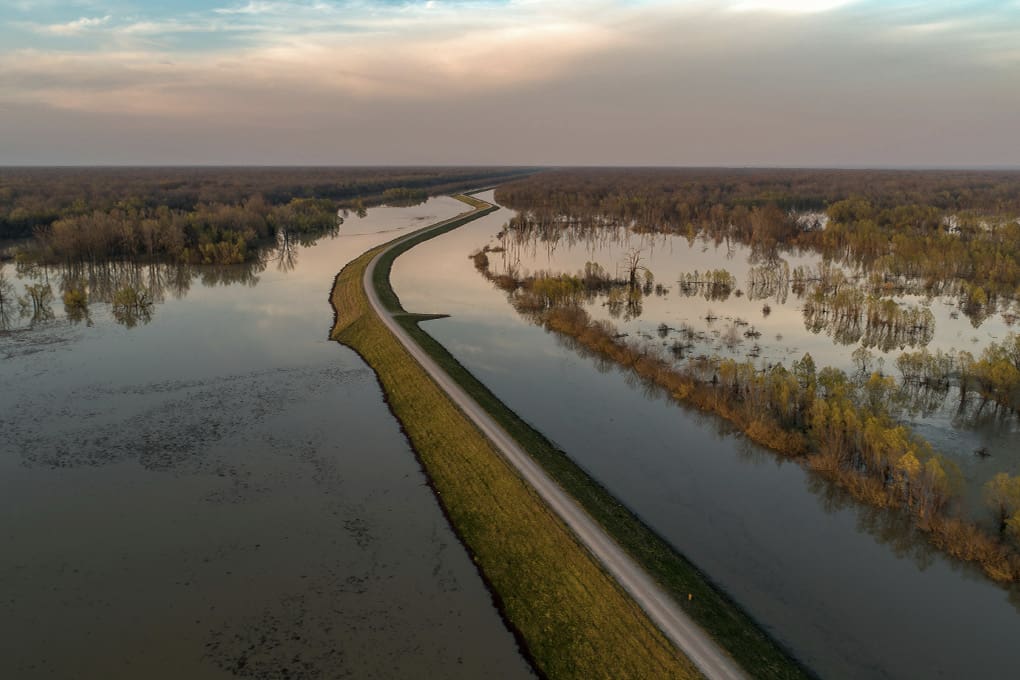
Flood preparedness is not a single action but an ongoing commitment to protecting your home, family, and community. By first understanding your flood risk, you create the foundation for effective planning.
A strong flood emergency plan ensures everyone knows their role in different scenarios, while permanent and last-minute home protection measures can save thousands in repair costs. Building a waterproof emergency kit, practicing evacuation routes, and documenting your plan turn preparation into real readiness.
During an active flood, following proven safety rules – such as never driving through water and evacuating immediately when ordered – can be life-saving. Afterward, safe recovery and thorough documentation support both health and financial recovery.
Finally, community networks and modern technology add layers of resilience that benefit everyone. The key is to act early and consistently so you are confident, not reactive, when the next flood strikes.
Visit Batten Emergency’s complete natural disaster preparedness guide for comprehensive strategies covering all aspects of emergency planning.
For detailed guidance on protecting your home during rapid-onset flooding, explore our flash flood safety protocols that could save crucial minutes when water rises quickly.
Ready to secure your home against water intrusion? Check out our expert analysis of the most effective flood barriers and protection systems to find the right solution for your property and budget.
Frequently Asked Questions
What Should Be Included in a Flood Emergency Plan?
A flood emergency plan should include two mapped evacuation routes, a family communication system with an out-of-state contact, and scenario-specific roles for family members. It should also identify nearby shelters, assign tasks for pets and children, and be documented in waterproof form for easy access during an emergency.
How Much Water and Food Should I Store for Flood Preparedness?
FEMA recommends storing at least one gallon of water per person per day for seven days, plus shelf-stable foods that require no cooking. Include a manual can opener, disposable utensils, and water purification tablets. Portable filters and unscented bleach provide backup options if clean water becomes unavailable for longer periods.
Are Flood Barriers Better than Sandbags?
Modern flood barriers are faster to deploy and more effective than traditional sandbags. They can hold back two to three feet of water and are reusable, while sandbags are labor-intensive, prone to leaks, and must be disposed of after use. Many homeowners find barriers worth the upfront cost for long-term protection.
How Can I Protect My Home from Sewage Backflow During Floods?
Installing backflow check valves in sewer lines can prevent sewage from entering your home during floods. These valves cost a few hundred dollars per installation but protect against hazardous contamination. Keeping drains clear and ensuring sump pumps have battery backups also reduces the risk of sewage entering living spaces.
Why Do So Many People Lack Flood Insurance?
Many homeowners mistakenly assume standard insurance covers floods, but it does not. Others underestimate their risk, even though one third of NFIP claims come from outside high-risk zones. Cost is another factor, but mitigation steps such as elevating utilities or improving drainage can lower premiums over time.
How Does Community Preparedness Improve Flood Safety?
Communities with neighborhood networks recover faster and sustain fewer losses. Shared equipment libraries, coordinated evacuation plans, and pooled investments in flood barriers multiply individual efforts. Technology such as smart sensors and satellite communicators can be shared across households, ensuring faster warnings and better communication when official systems are strained.
Sources
- 2024 US Floods – Center for Disaster Philanthropy
- Climate Change Indicators: Heavy Precipitation | US EPA
- Floods and cause-specific mortality in the United States applying a triply robust approach | Nature Communications
- 41 Million Americans Live in Flood Zones -Three Times the FEMA Estimate, Finds New Study – Yale E360
- Talking Points | The National Flood Insurance Program for Agents
- Neptune Flood: 77% of At-Risk Homes Outside FEMA Zones Have No Flood Insurance
- Louisiana flooding: 20,000 people rescued as major disaster declared | Louisiana | The Guardian
- Flood Insurance | The Burns Agency | Gilroy, Kernan & Gilroy
- Thunderstorm Hazards – Flash Floods | National Oceanic and Atmospheric Administration
- Safety Guidelines: Reentering Your Flooded Home | Floods | CDC
- National Disaster Recovery Framework | FEMA.gov
- Water Damage Statistics and Information
